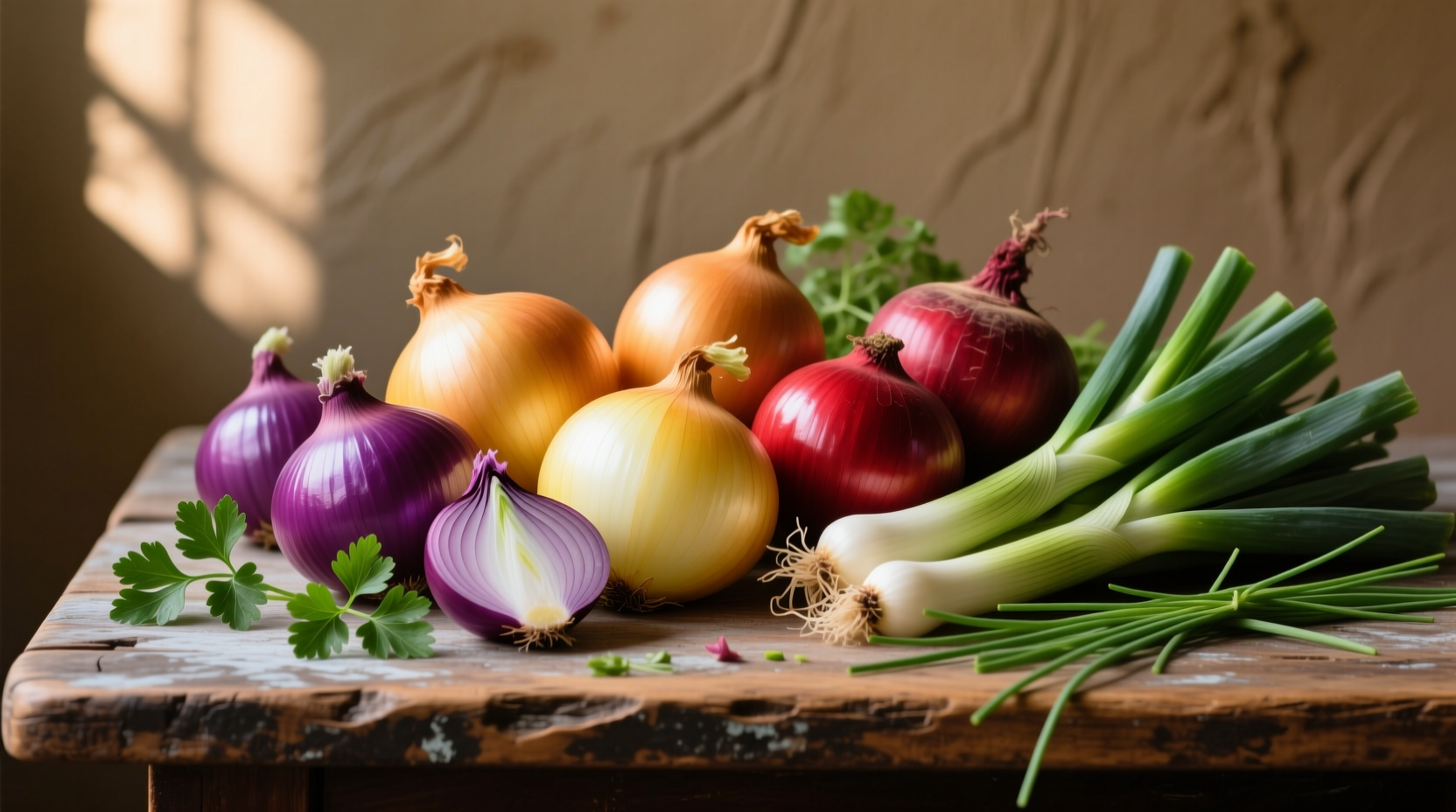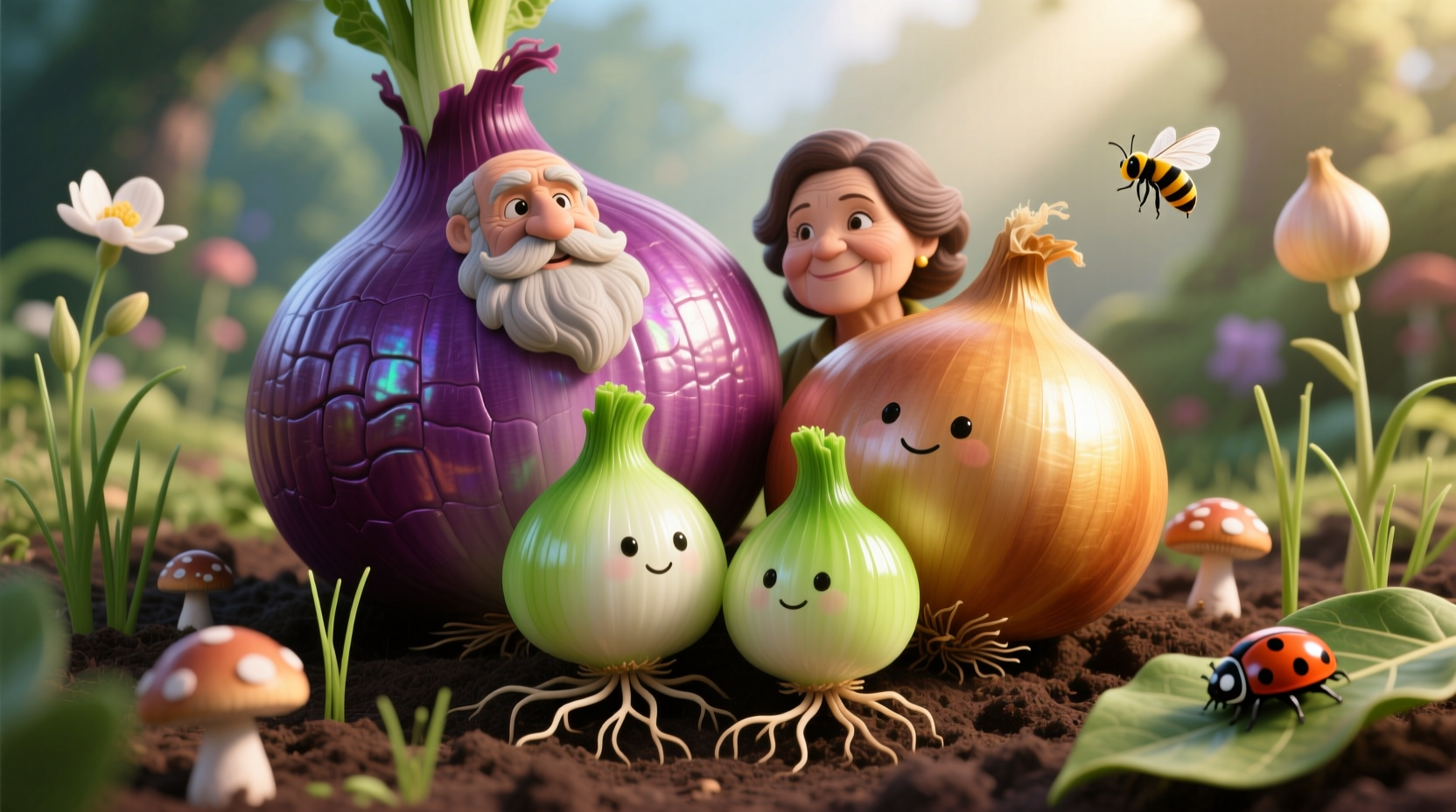Unlock the Power of Allium: Your Complete Guide to Onion Family Vegetables
Discover how these versatile kitchen staples can transform your cooking and boost your health. Whether you're a home cook, gardener, or nutrition enthusiast, understanding the Allium family unlocks culinary creativity and science-backed wellness benefits you can implement immediately.
What Makes a Vegetable Part of the Onion Family?
All members of the Allium genus share distinctive biological characteristics that set them apart from other vegetable families. These plants produce sulfur-containing compounds called organosulfur compounds, which create their signature pungent aroma and sharp flavor when cut or crushed. This chemical reaction occurs when enzymes interact with these compounds, explaining why your eyes water when chopping onions.
Botanically, Allium vegetables grow from bulbs or modified stem bases and produce flowers in spherical clusters. Their distinctive chemical profile not only creates their flavor but also provides significant health-promoting properties that have been studied extensively by researchers.
| Allium Vegetable | Scientific Name | Distinctive Flavor Profile | Primary Culinary Use |
|---|---|---|---|
| Onion | Allium cepa | Sharp, pungent when raw; sweet when cooked | Base flavor for countless dishes |
| Garlic | Allium sativum | Intensely pungent; mellow when roasted | Flavor enhancer in global cuisines |
| Leek | Allium ampeloprasum | Mild, sweet onion flavor | Soups, stews, and delicate dishes |
| Chives | Allium schoenoprasum | Delicate onion flavor | Garnish and fresh applications |
| Shallot | Allium cepa var. aggregatum | Subtle, complex sweet-onion flavor | Vinaigrettes and refined sauces |
Health Benefits Backed by Scientific Research
Numerous studies confirm the impressive health benefits of Allium vegetables. According to research published in the Journal of Agricultural and Food Chemistry, the organosulfur compounds in these vegetables demonstrate significant antioxidant activity that helps protect cells from damage. The National Center for Complementary and Integrative Health notes that regular consumption of Allium vegetables may support cardiovascular health by helping maintain healthy blood pressure levels and improving cholesterol profiles.
One particularly compelling study from the University of California found that populations consuming higher amounts of Allium vegetables showed a 20-30% lower risk of certain digestive system cancers compared to those with lower consumption. These findings align with traditional medicinal uses of garlic and onions across various cultures for centuries.

Practical Cooking Applications You Can Use Today
Understanding how to properly use Allium vegetables can dramatically improve your cooking results. For maximum flavor development, follow these professional chef techniques:
- Layering onion family flavors: Start with shallots for base flavor, add onions for body, finish with chives for freshness
- Garlic timing matters: Add minced garlic during the last 2-3 minutes of cooking to prevent bitterness
- Leek preparation: Always wash thoroughly between layers to remove trapped soil
- Flavor transformation: Caramelizing onions for 30-40 minutes creates natural sweetness through the Maillard reaction
Professional chefs recommend keeping a variety of Allium vegetables on hand because each provides unique flavor dimensions. As Antonio Rodriguez explains in his culinary research, “The onion family offers one of the most versatile flavor toolkits in cooking—understanding their individual properties allows you to build complex flavor profiles that elevate simple dishes.”
Historical Timeline of Allium Cultivation
The human relationship with Allium vegetables spans millennia, with archaeological evidence showing their importance across civilizations:
- 5000 BCE: Earliest evidence of onion cultivation in Bronze Age settlements
- 2600 BCE: Ancient Egyptians document garlic use for worker nutrition while building pyramids
- 1st Century CE: Roman agricultural writer Columella documents multiple onion varieties
- 16th Century: European explorers introduce Allium varieties to the Americas
- 19th Century: Scientific classification of Allium genus begins with modern botanical methods
- Present Day: Over 800 Allium species identified worldwide with ongoing genetic research
This historical perspective, documented by agricultural historians at institutions like the USDA National Plant Germplasm System, shows how deeply embedded these vegetables are in human culinary development.
Growing Your Own Allium Family Vegetables
Home gardeners can successfully grow multiple Allium varieties with proper technique. The key factors for successful cultivation include:
- Well-drained soil with moderate fertility (excessive nitrogen reduces storage quality)
- Full sun exposure for most varieties
- Proper spacing (4-6 inches between plants)
- Consistent moisture during bulb formation
- Harvest timing specific to each variety
According to the Cornell University Cooperative Extension, one common mistake home gardeners make is harvesting onions too early, which significantly reduces their storage life. Properly cured onions can store for 6-8 months in cool, dry conditions.
Important Considerations for Special Diets
While Allium vegetables offer numerous health benefits, they contain FODMAPs (fermentable carbohydrates) that can cause digestive discomfort for some individuals. The Monash University Low FODMAP Diet research indicates that:
- Garlic and onion contain high levels of fructans
- Chives contain moderate levels
- Green parts of scallions are low FODMAP
Those following a low-FODMAP diet can often enjoy the green parts of scallions while avoiding the white bulb portions. Many chefs have developed creative alternatives using asafoetida (hing) to replicate Allium flavors for sensitive eaters.











 浙公网安备
33010002000092号
浙公网安备
33010002000092号 浙B2-20120091-4
浙B2-20120091-4